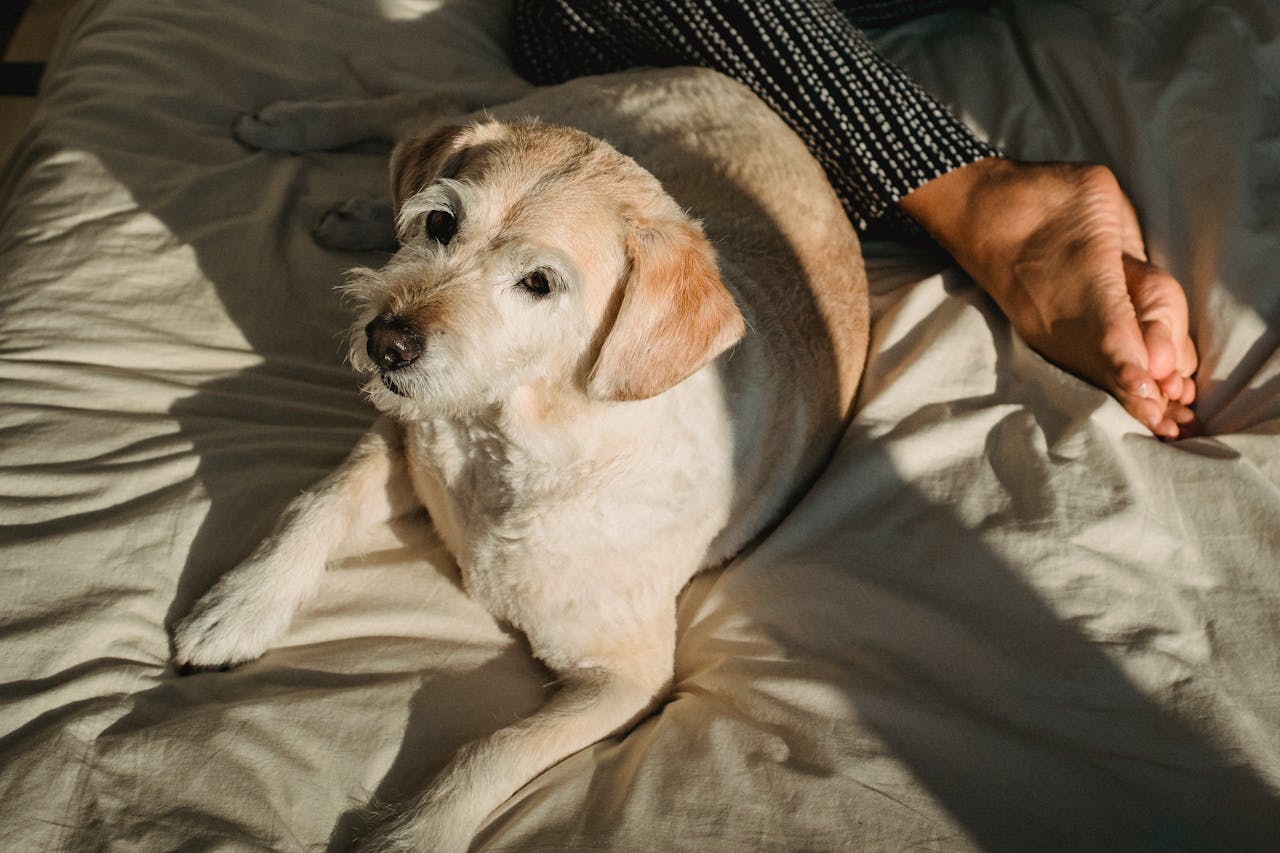Training your dog to love their crate can be a game-changer.
It provides a safe haven for them and gives you peace of mind knowing they’re secure, especially during those moments when you can’t be right there with them.
Crate training doesn’t have to be a daunting task.
In fact, with the right approach, it can be a positive and rewarding experience for both you and your furry friend.
We’ll be diving into six effective steps that will guide you through this process.
These tips are not only tried and tested, but also focus on creating a positive association with the crate for your dog.
1. Understanding the importance of crate training
A crate can serve as a safe haven for your dog, providing a familiar and secure space that they can retreat to whenever they feel overwhelmed or anxious.
In addition, crate training is an effective method for house training puppies or new dogs, as it taps into their natural instinct not to soil their sleeping area.
It also helps manage destructive behavior by limiting your dog’s access to the rest of the house when you’re unable to supervise them.
Here are some key benefits of crate training:
- Creates a sense of security and comfort for your dog
- Facilitates house training
- Helps manage destructive behavior
- Ensures safety during travel
- Provides a controlled environment for recovery after surgery or illness
Understanding these benefits will give you a clearer perspective on how to approach crate training, and may also help motivate you through the process.
2. Choosing the right crate
The crate should be a comfortable and inviting space for your furry friend, so choosing the right one is crucial.
The crate should be large enough for your dog to stand, turn around, and lie down comfortably.
However, it should not be too big that your dog can sleep in one corner and eliminate in another, as this would defeat the purpose of house training using a crate.
Materials used in crates vary from durable plastic to metal wire or even fabric.
For puppies or dogs who are just starting crate training, a solid-sided plastic crate is often recommended as it feels more like a natural den.
Wire crates are more versatile and often collapsible for easy transport, but they might not give some dogs the secure feeling of a den.
Ensure the crate has good ventilation, especially if it’s a solid-sided plastic crate.
Remember to place the crate in an area where your dog can feel part of the family and see what’s going on around them.
Dogs are social creatures and want to be where you are, so don’t isolate them by placing the crate in an out-of-sight location.
Finally, consider getting a crate pad or bed to make the space more comfortable.
But if your dog is prone to chewing or swallowing non-food items, it’s best to wait until they’ve adjusted to their new space before adding bedding.
3. Introducing your dog to the crate

This step is critical as it sets the tone for your dog’s relationship with the crate.
Start by placing the crate in a common area where your family spends a lot of time.
Leave the door of the crate open and let your dog explore it on their own terms.
It’s important not to rush this step; let your dog get used to the idea of the crate being part of their environment.
You can encourage your dog to enter the crate by placing treats or toys inside.
Once they’re comfortable entering the crate, start feeding them their meals inside it, gradually moving the dish further back with each meal.
This creates a positive association with the crate.
Never force your dog into the crate.
It’s essential for them to view it as a safe and welcoming place, not a punishment or trap.
Related Stories from Black Pearl Dogs
4. Starting to close the door
This should be done gradually and with plenty of positive reinforcement.
Begin by closing the door while they are eating their meal inside the crate.
At first, open it immediately after they finish eating.
Over time, you can gradually increase the amount of time the door stays closed after they have finished eating.
If your dog appears calm and relaxed, you can also try to close the door for short periods when they are not feeding.
Remember to reward your dog for staying calm and quiet inside the crate.
This can be done with treats or simply by offering praise and affection.
If they show signs of anxiety or distress, such as whining or attempts to escape, it may be a sign that you are moving too fast and need to slow down the process.
5. Gradually increasing the crate time
As your dog becomes more comfortable with the crate being closed, you can start increasing the amount of time they spend inside.
You can start by having your dog in the crate for short periods while you are home.
This could be while you’re doing household chores or watching TV.
Always provide a safe and comfortable environment for your dog when they are in the crate.
This could include providing a favorite toy or blanket, and ensuring that your dog has had a chance to relieve themselves before being crated.
If your dog appears comfortable after these shorter periods, you can slowly start extending the time.
Nonetheless, it’s important not to leave your dog crated for too long.
A good rule of thumb is that a dog can stay in a crate for a number of hours equal to their age in months plus one, up to a maximum of eight hours (for adult dogs).
6. Using the crate for overnight sleeping
After your dog is comfortable spending time in the crate during the day, you can start using the crate for overnight sleeping.
This can help reinforce positive associations with the crate and provide a secure space for your dog to sleep.
Start by moving the crate into your bedroom, or wherever you want your dog to sleep.
This allows your dog to feel close to you, even when they are in their crate.
It also makes it easier for you to hear if your dog needs to go out during the night, especially important for puppies.
Ensure that your dog has been adequately exercised and had a chance to relieve themselves before bedtime.
This will help them settle down and sleep through the night.
Furthering your crate training journey
As you move forward in your crate training journey, remember that patience and consistency are key.
It’s normal for there to be a few hiccups along the way.
But with time, your dog will come to view their crate as their very own safe haven.
Remember, every dog is unique and what works for one might not work for another.
Be open to adapting your approach based on your dog’s needs and responses.
Most importantly, always ensure that the crate remains a positive and safe space for your dog.
It should never be used as a form of punishment.
This will help maintain the positive association your dog has with their crate.









